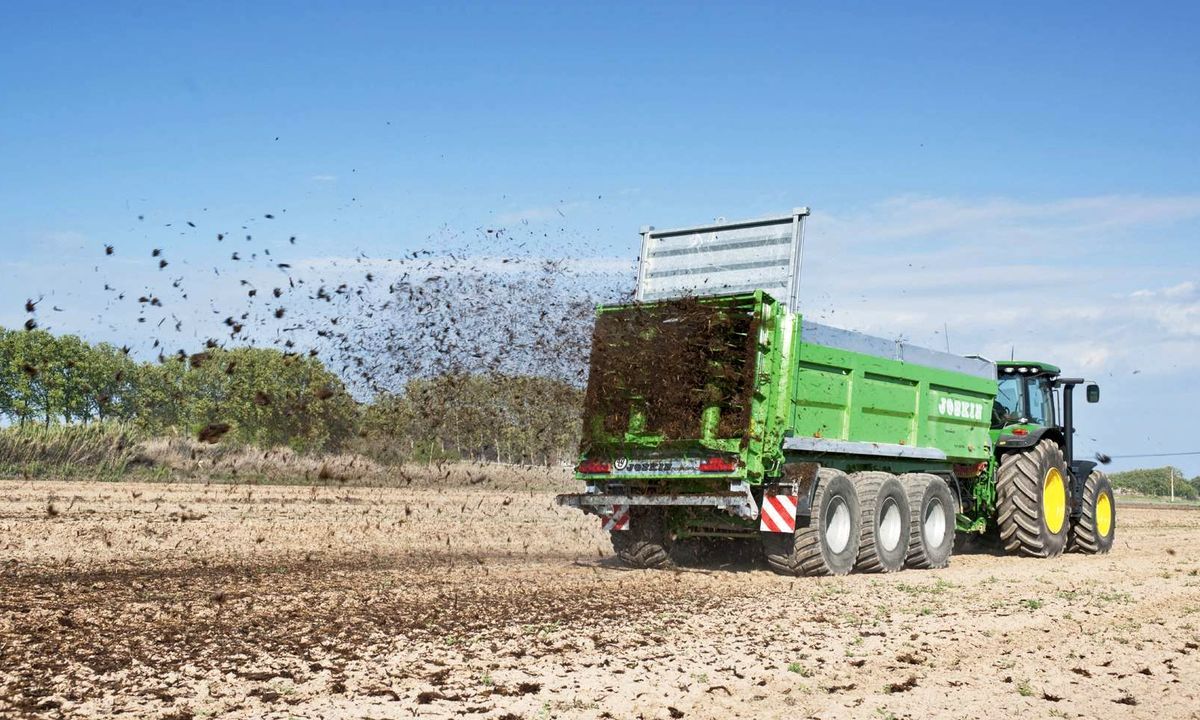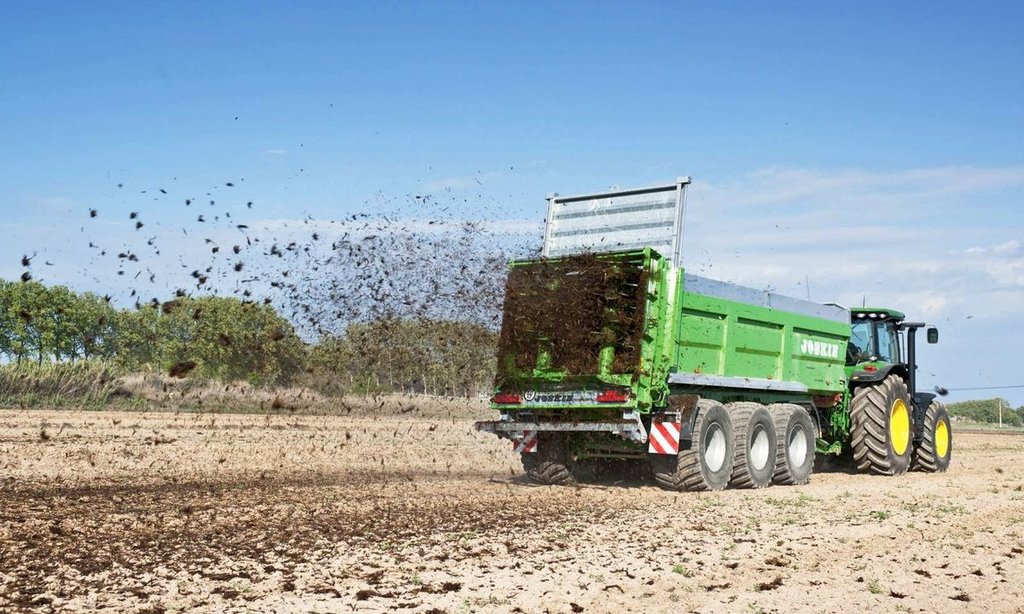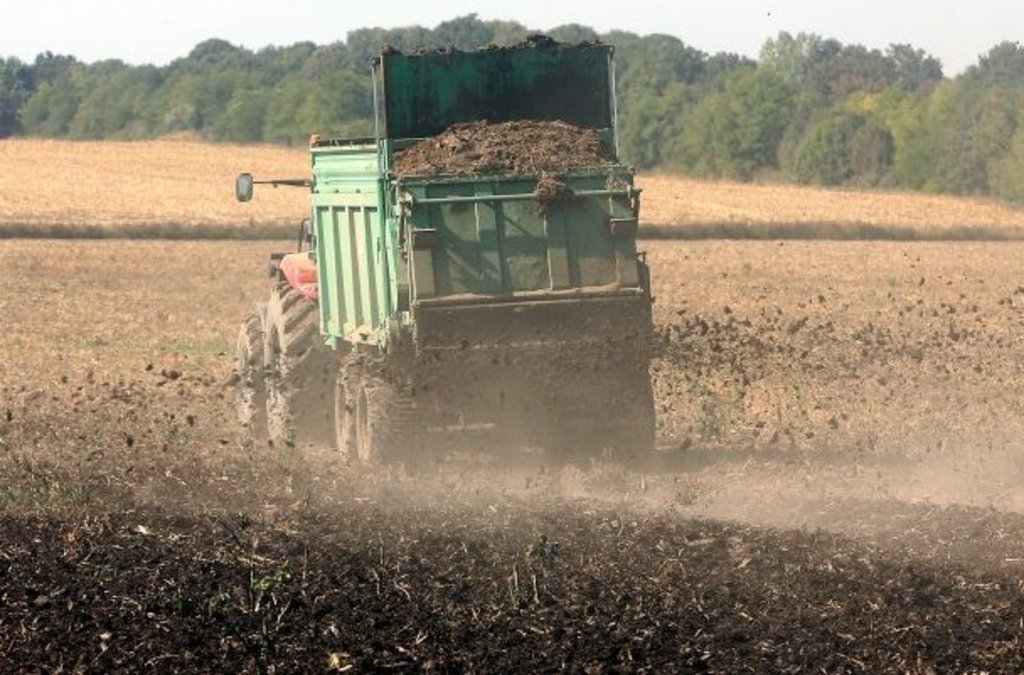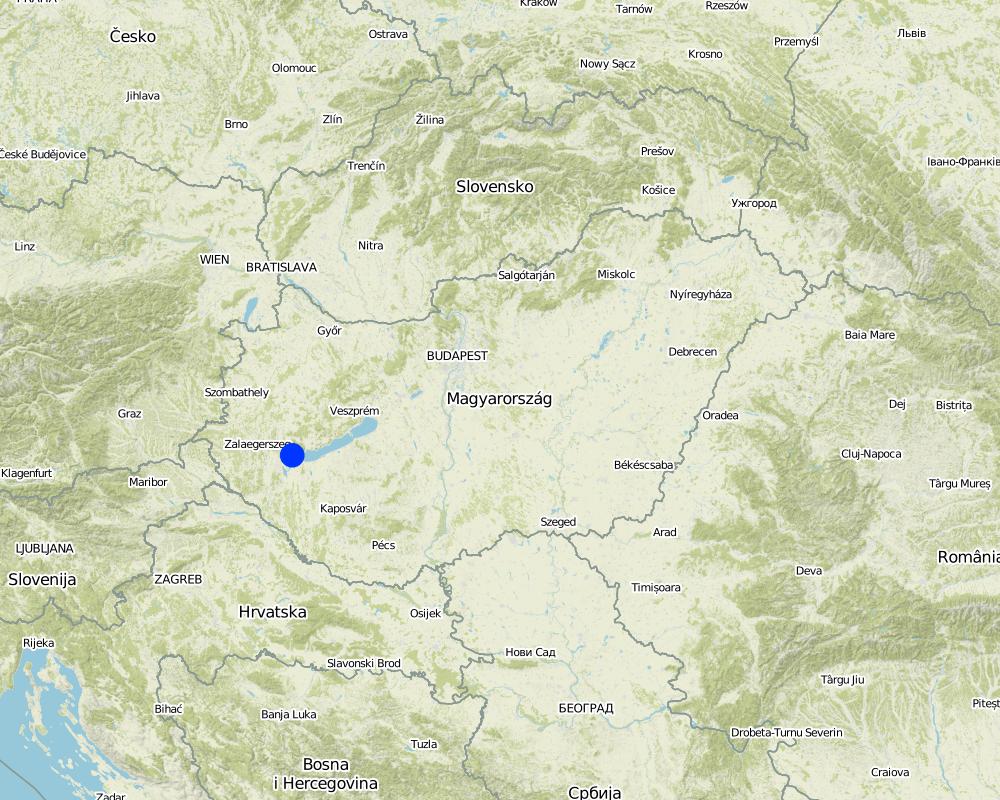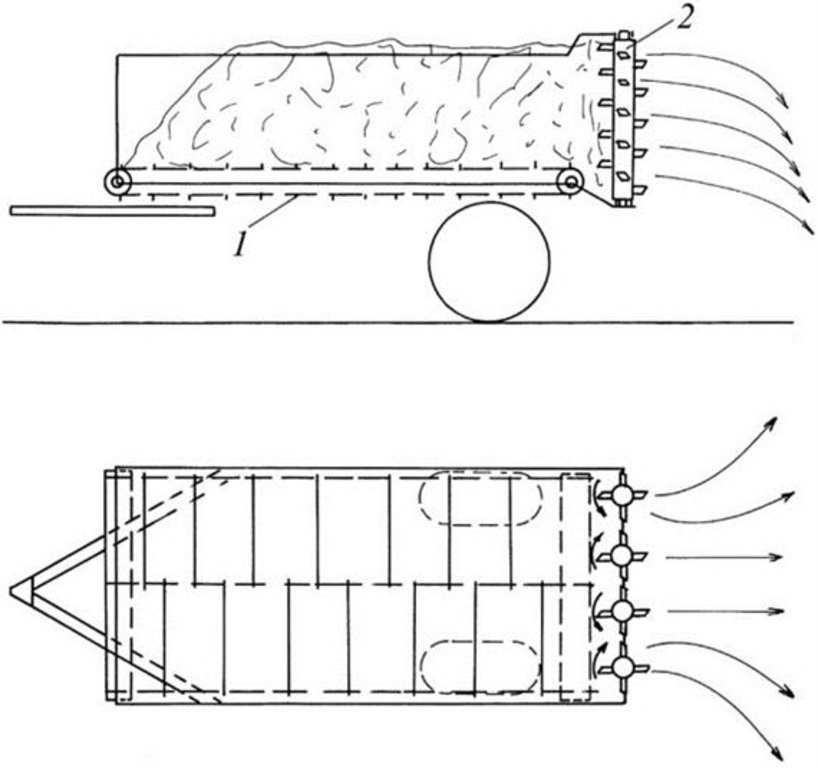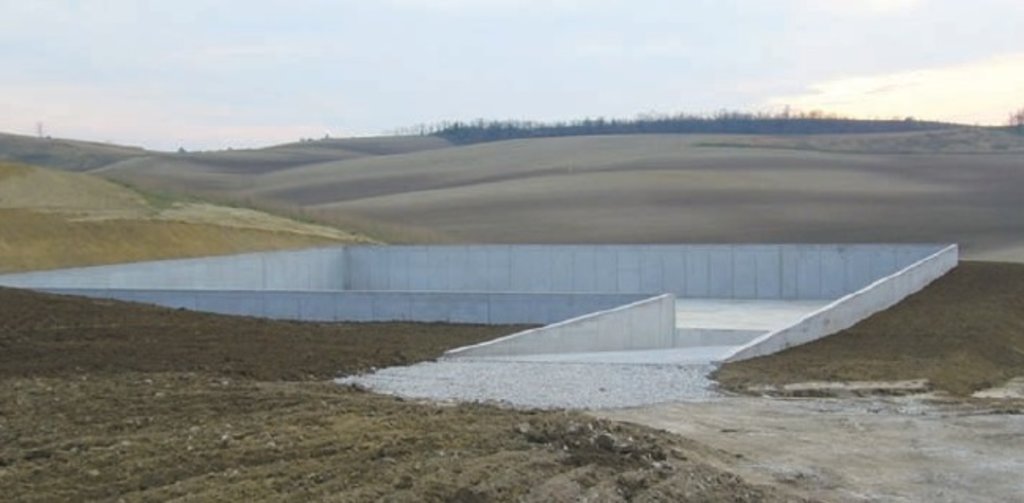Farmyard manuring [Hungary]
- Creation:
- Update:
- Compiler: Brigitta Toth
- Editor: –
- Reviewers: Ursula Gaemperli, Gudrun Schwilch
Istállótrágyázás
technologies_3063 - Hungary
View sections
Expand all Collapse all1. General information
1.2 Contact details of resource persons and institutions involved in the assessment and documentation of the Technology
Name of project which facilitated the documentation/ evaluation of the Technology (if relevant)
Interactive Soil Quality assessment in Europe and China for Agricultural productivity and Environmental Resilience (EU-iSQAPER)Name of the institution(s) which facilitated the documentation/ evaluation of the Technology (if relevant)
Department of Crop Production and Soil Science, University of Pannonia - Hungary1.3 Conditions regarding the use of data documented through WOCAT
When were the data compiled (in the field)?
28/10/2016
The compiler and key resource person(s) accept the conditions regarding the use of data documented through WOCAT:
Yes
1.4 Declaration on sustainability of the described Technology
Is the Technology described here problematic with regard to land degradation, so that it cannot be declared a sustainable land management technology?
No
2. Description of the SLM Technology
2.1 Short description of the Technology
Definition of the Technology:
Farmyard manure is a decomposed mixture of cattle dung, urine with bedding material and fodder residues. After rotting the farmyard manure it is incorporated into the ground to increase soil fertility.
2.2 Detailed description of the Technology
Description:
1. The case study area is situated within the catchment of river Zala in western Hungary. 37% of the total catchment area is arable land which is much lower than the national average, 27% is forest, which exceeds the national average. 15% of the land is under grassland management, 5% is horticulture, 3% is pomiculture, 2% is viticulture, 1% is reed management and fish farming. In arable land non irrigated cereals, maize and oil crops are the main farming system classes. Among permanent crops vineyard and fruit trees are the most significant.
2. Cattle dung, urine with bedding material and fodder residues are decomposed. 4 months are needed for decomposition of the manure. After rotting the manure it is spread to the soil and incorporated. Generally winter rape, corn and sugar beet are the main crops before which manure is applied. Nitrate regulation has to be considered on fields which are defined as sensitive areas, both date and rate of fertilization are limited. Crop rotation is part of the technology, since dairy production is an important activity of the production, so fodder crops have to be produced on a territory determined by the demand of the livestock. Catch crops are rotated on the rest of the field.
3. The purpose of the technology is to increase soil fertility. The following general nutrients are included in the farmyard manure: N%=0.3-0.5, P2O5%=0.20-0.25, K2O%=0.5-0.5 .
4. It is important to have boving holding in a short distance to the plots of the farm where it has to be applied. The manure is spread in each third or fourth year.
5. Impacts of the technology are increased organic matter content, improved biological activity and structure of the soil.
6. Land users like its positive effect on soil health, only one disadvantage can be that it can increase weed infestation.
2.3 Photos of the Technology
2.5 Country/ region/ locations where the Technology has been applied and which are covered by this assessment
Country:
Hungary
Region/ State/ Province:
Zala
Further specification of location:
Keszthely
Map
×2.6 Date of implementation
Indicate year of implementation:
2006
2.7 Introduction of the Technology
Specify how the Technology was introduced:
- through land users' innovation
- as part of a traditional system (> 50 years)
3. Classification of the SLM Technology
3.1 Main purpose(s) of the Technology
- improve production
- reduce, prevent, restore land degradation
3.2 Current land use type(s) where the Technology is applied

Cropland
- Annual cropping
Main crops (cash and food crops):
maize, barley, rye
Comments:
-
If land use has changed due to the implementation of the Technology, indicate land use before implementation of the Technology:
It was arable land also before introducing the technology.
3.3 Further information about land use
Water supply for the land on which the Technology is applied:
- rainfed
Number of growing seasons per year:
- 1
Specify:
From 10-15 April till 25-30 October
Livestock density (if relevant):
-
3.4 SLM group to which the Technology belongs
- rotational systems (crop rotation, fallows, shifting cultivation)
- integrated soil fertility management
3.5 Spread of the Technology
Specify the spread of the Technology:
- evenly spread over an area
If the Technology is evenly spread over an area, indicate approximate area covered:
- 1-10 km2
3.6 SLM measures comprising the Technology

agronomic measures
- A2: Organic matter/ soil fertility
3.7 Main types of land degradation addressed by the Technology

soil erosion by water
- Wt: loss of topsoil/ surface erosion

soil erosion by wind
- Et: loss of topsoil

chemical soil deterioration
- Cn: fertility decline and reduced organic matter content (not caused by erosion)

physical soil deterioration
- Pk: slaking and crusting

biological degradation
- Bq: quantity/ biomass decline
- Bl: loss of soil life
3.8 Prevention, reduction, or restoration of land degradation
Specify the goal of the Technology with regard to land degradation:
- prevent land degradation
4. Technical specifications, implementation activities, inputs, and costs
4.1 Technical drawing of the Technology
4.2 Technical specifications/ explanations of technical drawing
Figure 1. Equipment to spread farmyard manure.
1. scraper chain
2. broadcaster
Figure 2. Construction of manure storage facility.
The stack of manure is built gradually in order to control the aerobic and anaerobic processes inside. Between the placement of two layers some days is left for the oxidative degradation processes.
4.3 General information regarding the calculation of inputs and costs
Specify how costs and inputs were calculated:
- per Technology area
Indicate size and area unit:
1 hectare
other/ national currency (specify):
Forint
Indicate exchange rate from USD to local currency (if relevant): 1 USD =:
260.0
Indicate average wage cost of hired labour per day:
10000
4.4 Establishment activities
| Activity | Type of measure | Timing | |
|---|---|---|---|
| 1. | construction of manure storage facility | Structural |
4.5 Costs and inputs needed for establishment
| Specify input | Unit | Quantity | Costs per Unit | Total costs per input | % of costs borne by land users | |
|---|---|---|---|---|---|---|
| Equipment | construction of manure storage | 1000 t | 1.0 | 4600000.0 | 4600000.0 | 50.0 |
| Total costs for establishment of the Technology | 4600000.0 | |||||
If land user bore less than 100% of costs, indicate who covered the remaining costs:
The farmer could apply for financial support (tender).
Comments:
Construction costs include labour and material. The facility can store 1000 t of manure.
4.6 Maintenance/ recurrent activities
| Activity | Type of measure | Timing/ frequency | |
|---|---|---|---|
| 1. | farmyard manure application | Agronomic | autumn before primary tillage |
Comments:
Incorporation of manure is done with the normal ploughing and therefore does not cause extra costs.
4.7 Costs and inputs needed for maintenance/ recurrent activities (per year)
| Specify input | Unit | Quantity | Costs per Unit | Total costs per input | % of costs borne by land users | |
|---|---|---|---|---|---|---|
| Labour | sum of labour cost for spreading the manure | day/ha | 0.02 | 15000.0 | 300.0 | 100.0 |
| Equipment | farmyard manure application (1 ha 0.16 hour) | machine hours | 0.16 | 80000.0 | 12800.0 | 100.0 |
| Total costs for maintenance of the Technology | 13100.0 | |||||
4.8 Most important factors affecting the costs
Describe the most determinate factors affecting the costs:
Cost of constructing the manure storage facility.
5. Natural and human environment
5.1 Climate
Annual rainfall
- < 250 mm
- 251-500 mm
- 501-750 mm
- 751-1,000 mm
- 1,001-1,500 mm
- 1,501-2,000 mm
- 2,001-3,000 mm
- 3,001-4,000 mm
- > 4,000 mm
Specify average annual rainfall (if known), in mm:
680.00
Indicate the name of the reference meteorological station considered:
Keszthely
Agro-climatic zone
- sub-humid
moderately warm, moderately wet
5.2 Topography
Slopes on average:
- flat (0-2%)
- gentle (3-5%)
- moderate (6-10%)
- rolling (11-15%)
- hilly (16-30%)
- steep (31-60%)
- very steep (>60%)
Landforms:
- plateau/plains
- ridges
- mountain slopes
- hill slopes
- footslopes
- valley floors
Altitudinal zone:
- 0-100 m a.s.l.
- 101-500 m a.s.l.
- 501-1,000 m a.s.l.
- 1,001-1,500 m a.s.l.
- 1,501-2,000 m a.s.l.
- 2,001-2,500 m a.s.l.
- 2,501-3,000 m a.s.l.
- 3,001-4,000 m a.s.l.
- > 4,000 m a.s.l.
Indicate if the Technology is specifically applied in:
- not relevant
Comments and further specifications on topography:
-
5.3 Soils
Soil depth on average:
- very shallow (0-20 cm)
- shallow (21-50 cm)
- moderately deep (51-80 cm)
- deep (81-120 cm)
- very deep (> 120 cm)
Soil texture (topsoil):
- medium (loamy, silty)
Soil texture (> 20 cm below surface):
- medium (loamy, silty)
Topsoil organic matter:
- medium (1-3%)
If available, attach full soil description or specify the available information, e.g. soil type, soil PH/ acidity, Cation Exchange Capacity, nitrogen, salinity etc.
Cambisol, pH is 7.3; OM is 1.5
5.4 Water availability and quality
Ground water table:
< 5 m
Availability of surface water:
good
Water quality (untreated):
poor drinking water (treatment required)
Is water salinity a problem?
No
Is flooding of the area occurring?
No
Comments and further specifications on water quality and quantity:
-
5.5 Biodiversity
Species diversity:
- medium
Habitat diversity:
- medium
Comments and further specifications on biodiversity:
-
5.6 Characteristics of land users applying the Technology
Sedentary or nomadic:
- Sedentary
Market orientation of production system:
- commercial/ market
Off-farm income:
- less than 10% of all income
Relative level of wealth:
- average
Individuals or groups:
- groups/ community
Level of mechanization:
- mechanized/ motorized
Gender:
- men
Age of land users:
- middle-aged
Indicate other relevant characteristics of the land users:
-
5.7 Average area of land owned or leased by land users applying the Technology
- < 0.5 ha
- 0.5-1 ha
- 1-2 ha
- 2-5 ha
- 5-15 ha
- 15-50 ha
- 50-100 ha
- 100-500 ha
- 500-1,000 ha
- 1,000-10,000 ha
- > 10,000 ha
Is this considered small-, medium- or large-scale (referring to local context)?
- medium-scale
5.8 Land ownership, land use rights, and water use rights
Land ownership:
- company
- individual, not titled
Land use rights:
- leased
- individual
Water use rights:
- leased
Comments:
-
5.9 Access to services and infrastructure
health:
- poor
- moderate
- good
education:
- poor
- moderate
- good
technical assistance:
- poor
- moderate
- good
employment (e.g. off-farm):
- poor
- moderate
- good
markets:
- poor
- moderate
- good
energy:
- poor
- moderate
- good
roads and transport:
- poor
- moderate
- good
drinking water and sanitation:
- poor
- moderate
- good
financial services:
- poor
- moderate
- good
- poor
- moderate
- good
6. Impacts and concluding statements
6.1 On-site impacts the Technology has shown
Socio-economic impacts
Production
crop production
Comments/ specify:
+30 % increase in yield
fodder production
Comments/ specify:
+30 % increase in yield, positive for nutrient recycling within the farm, better soil conservation due to perennial crops e.g. alfalfa
risk of production failure
Comments/ specify:
it results in more stable market position
Income and costs
farm income
Comments/ specify:
transporting manure for long distances is not economical
Socio-cultural impacts
food security/ self-sufficiency
Comments/ specify:
stabilization of the whole system of farming
SLM/ land degradation knowledge
Comments/ specify:
better soil condition is a feedback for the farmer
Ecological impacts
Water cycle/ runoff
surface runoff
Comments/ specify:
due to better soil structure
excess water drainage
Comments/ specify:
due to better soil structure
Soil
nutrient cycling/ recharge
Comments/ specify:
positive for nutrient recycling within the farm
soil organic matter/ below ground C
Comments/ specify:
OM increases with 30 % in temperate climate on Luvisol
Biodiversity: vegetation, animals
biomass/ above ground C
Comments/ specify:
yield is increased
beneficial species
Comments/ specify:
more earthworms
6.2 Off-site impacts the Technology has shown
buffering/ filtering capacity
Comments/ specify:
increase cation exchange capacity
impact of greenhouse gases
Comments/ specify:
higher SOC results in better C sequestration
6.3 Exposure and sensitivity of the Technology to gradual climate change and climate-related extremes/ disasters (as perceived by land users)
Gradual climate change
Gradual climate change
| Season | Type of climatic change/ extreme | How does the Technology cope with it? | |
|---|---|---|---|
| annual temperature | increase | not known |
Climate-related extremes (disasters)
Climatological disasters
| How does the Technology cope with it? | |
|---|---|
| drought | not known |
Comments:
-
6.4 Cost-benefit analysis
How do the benefits compare with the establishment costs (from land users’ perspective)?
Short-term returns:
neutral/ balanced
Long-term returns:
positive
How do the benefits compare with the maintenance/ recurrent costs (from land users' perspective)?
Short-term returns:
neutral/ balanced
Long-term returns:
positive
Comments:
Manure is used only if it is available within a few km around the farm.
6.5 Adoption of the Technology
- 1-10%
Of all those who have adopted the Technology, how many have did so spontaneously, i.e. without receiving any material incentives/ payments?
- 90-100%
6.6 Adaptation
Has the Technology been modified recently to adapt to changing conditions?
No
6.7 Strengths/ advantages/ opportunities of the Technology
| Strengths/ advantages/ opportunities in the land user’s view |
|---|
| Increases the soil organic content and improves the soil structure. |
| Increase of soil fertility. |
| Strengths/ advantages/ opportunities in the compiler’s or other key resource person’s view |
|---|
| Improved microbiological activity resulting in improved nutrient utilization. |
| Improved soil health, due to better microbial activity. Soil structure improves. |
| In this way it improves soil fertility. |
6.8 Weaknesses/ disadvantages/ risks of the Technology and ways of overcoming them
| Weaknesses/ disadvantages/ risks in the land user’s view | How can they be overcome? |
|---|---|
| Risk of weed infestation. Labour and cost intensive. |
| Weaknesses/ disadvantages/ risks in the compiler’s or other key resource person’s view | How can they be overcome? |
|---|---|
| Risk of weed infestation. Labour and cost intensive, heavy field work causing compaction. | Precise pest management. Timing of field applications should be better adapted to soil moisture conditions. |
7. References and links
7.1 Methods/ sources of information
- field visits, field surveys
2
- interviews with land users
1
7.2 References to available publications
Title, author, year, ISBN:
-
Available from where? Costs?
-
7.3 Links to relevant information which is available online
Title/ description:
-
URL:
-
Links and modules
Expand all Collapse allLinks
No links
Modules
No modules


